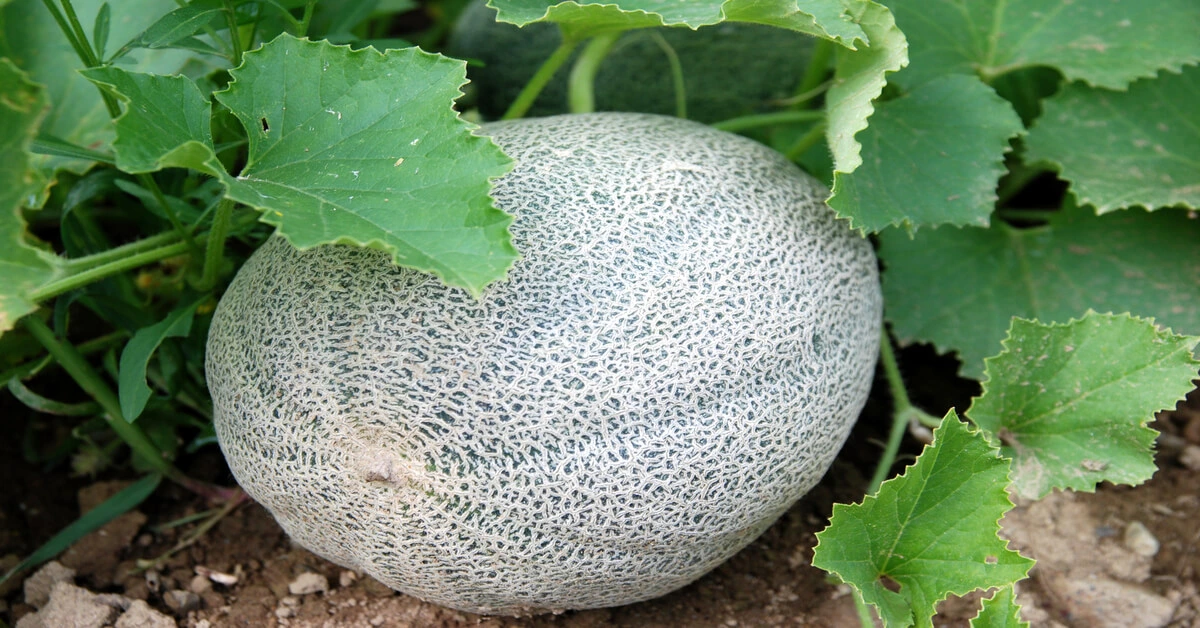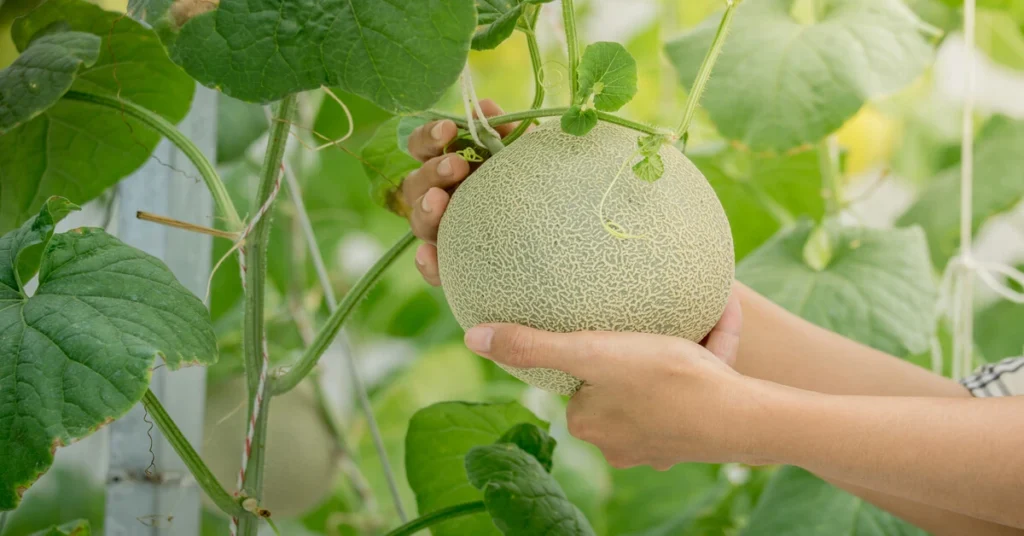How Many Cantaloupes Per Plant Can You Expect?
When we embark on the journey of growing cantaloupes, the question that often intrigues us the most is – how many cantaloupes per plant can we expect? Simply put, the number of cantaloupes one plant can produce varies depending on several factors, such as the growing conditions, watering, and care provided.
Depending on the growing conditions, a single cantaloupe plant can produce anywhere from 2 to 6 fruits per plant.
The Ideal Growing Conditions
Cantaloupes thrive in sunny spots with well-drained soil. We recommend sowing seeds directly in the garden once the risk of frost is past. A long growing season is beneficial for them.
How to Grow Cantaloupes

Embrace the joy of cultivating cantaloupes in your garden. It’s an exciting journey where you’ll see your cantaloupe seedlings sprout, witness the growth of the cantaloupe vines, and finally, relish the succulent fruit.
Soil
Like many melons, Cantaloupes prefer well-drained, sandy, or loamy soil with a pH between 6.0 and 6.5. This pH range is slightly acidic and ideal for nutrient uptake, a crucial aspect of how cantaloupes grow. The soil must be loose and not compacted to allow the plant’s roots to expand and absorb nutrients effectively.
Water
These plants need a steady supply of water but also an environment where their roots are not perpetually soaked, which can lead to root rot. A well-established watering routine can significantly impact the quality and quantity of your cantaloupes.
Generally, cantaloupes need about 1 to 2 inches of water per week. It’s better to water deeply and infrequently than lightly every day. Deep watering encourages the roots to grow further into the soil, producing more robust and resilient plants. During the growing and flowering stages, maintaining consistent soil moisture is vital.
Fertilizing
Like many other fruit-bearing plants, Cantaloupes need ample nutrients to produce their best yield. They require a well-balanced fertilizer with an equal nitrogen, phosphorus, and potassium ratio—typically represented as a 10-10-10 or 14-14-14 formula.
Nitrogen promotes healthy leaf and vine growth, phosphorus aids in flower and fruit development, and potassium enhances plant health and disease resistance.
Monitoring the Growth of Cantaloupe Vines
As your cantaloupe seedlings grow, they’ll start to vine out and require support. Some gardeners prefer to train their cantaloupes on trellises to keep the fruits off the ground.
The Role of Cantaloupe Varieties in Production
Different cantaloupe varieties can produce other numbers of fruits per plant. Smaller cantaloupe varieties may yield more fruits due to their compact size. Thus, if you’re growing cantaloupes in a smaller space, opt for these.
Popular varieties of cantaloupe include Hale’s Best Jumbo, Sugar Cube, Minnesota Midget, and Hearts of Gold. Each offers a unique flavor profile and growing characteristics.
Harvesting Your Cantaloupes

Harvesting cantaloupes is a rewarding process. You’ll know they’re ready when they easily slip away from the vine. The typical period is about 70 to 90 days after planting cantaloupe seeds. The aroma of a ripe cantaloupe is another sign to look out for.
Maximizing Cantaloupe Production
To get more cantaloupes per plant, focus on providing optimal growing conditions. Nutrients during the growing season are vital, particularly during the growing and flowering stages. Regular watering, plenty of sunlight, and protection from pests can increase the yield.
Conclusion
Now that we’ve explored how many cantaloupes one plant can produce and the factors influencing it, you’re better equipped to start growing your own. You can look forward to a bountiful harvest of this sweet, juicy fruit with the proper care and attention.
Remember, each plant is unique, and the joy of gardening comes from learning and adapting to the needs of your plants. Enjoy the process of growing cantaloupes and the tasty rewards it brings!

